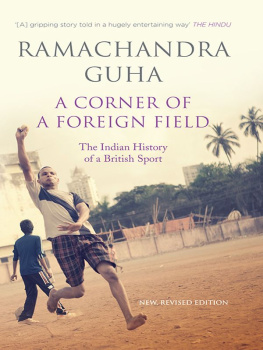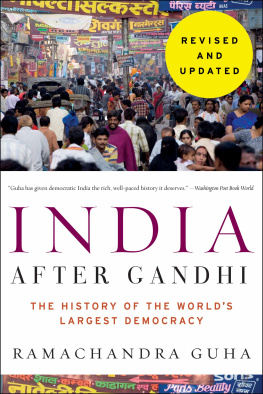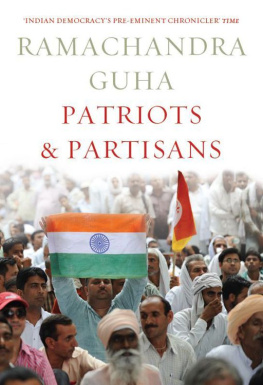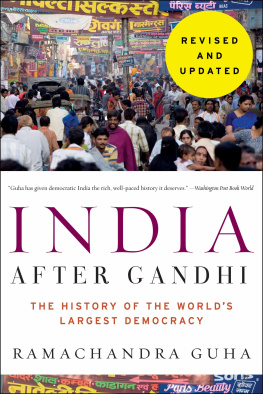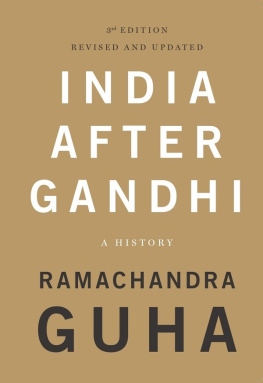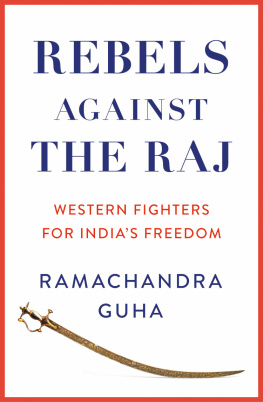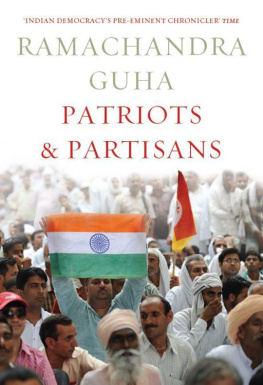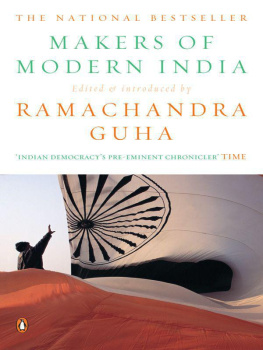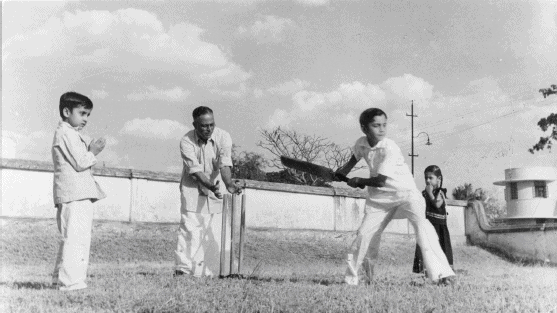The novelist R. K. Narayan playing cricket with his nephews, Mysore, 1950.
Photograph taken by T. S. Satyan
It is a dreadful pity when a beautifully spacious generalization is upset by one or two simple facts.
List of Illustrations
The illustrations that I have chosen for this book are either rare and difficult to obtain or illustrate the cultural rootedness of cricket in India. I have not reproduced pictures of Test match crowds or of contemporary cricketers such as Sachin Tendulkar, judging that the reader would already be familiar with them.
(H. D. Darukhanawala, Parsis and Sports and Kindred Subjects (1934), copy in the authors collection.)
(The Anandji Dossa Collection Cricket Club of India, Mumbai.)
(Courtesy of Sunil Khilnani.)
(F. J. St Gore, Lights and Shades of Hill Life in the Afghan and Hindu Highlands of the Punjab: A Contrast, 1895.)
(J. M. Framji Patel, Stray Thoughts on Indian Cricket (1905), copy in the authors collection.)
(Anandji Dossa Collection Cricket Club of India, Mumbai.)
(Courtesy of Mrs Sumati Bagchee.)
(From The Field, a monthly sports magazine then published from Madras, issue of October 1932, copy in the authors collection.)
(From Indian Cricket, December 1934, copy in the authors collection.)
(From the end pages of S. K. Roy, Bombay Pentangular (1945), copy in the authors collection.)
(From Hargreaves, Googlies (1971).)
(Courtesy of A. D. Vyas.)
(From the authors collection.)
(Photograph Sanjeev Saith.)
(Courtesy Dinodia Photo Agency, Mumbai.)
(Courtesy Dinodia Photo Agency, Mumbai.)
Introduction to the Second Edition
THE PHYSICIST C. V. RAMAN once remarked that his greatest discovery was the weather of Bangalore. Although I had known the city from childhood, visiting it every summer to see my grandparents, it was only after I moved here for good in the 1990s that the truth behind Ramans witticism struck me. I had previously lived in Delhi, where in March and April it was too dusty; in May and June too hot; from July to September too sultry. December and January were fog-laden or freezing.
In Delhi I did my writing in the late autumn and early spring. In Bangalore, however, I found I could work all year round. Thus, between June and September 1999, while the rest of India was steaming or sweating, in a great rush of energy I wrote the first draft of A Corner of a Foreign Field. It all came out so quickly, because the project blended my passion with my profession, and because of the compelling story of its central character, the Untouchable slow bowler Palwankar Baloo. But that Bangalores weather was so glorious also helped.
Even as I was writing A Corner of a Foreign Field, I realized that there were spin-off projects worth pursuing, not necessarily by me but by scholars who had the talent for, and interest in, them. I sensed that a social history of football on the Kolkata Maidan which might likewise view sport through the master categories of race, caste, religion, and nation was waiting to be written. A full-fledged biography of Baloo, covering both his sporting and political career, and using more Marathi-language sources than I had, would be a terrific idea. And while the role of the Bombay Chronicle has been spoken of in some histories of the Indian press, a stand-alone study of this remarkable newspaper would shed much light on the history of Bombay and of late colonial India.
These ideas for projects by other scholars struck me while I was writing the book. After it was published, however, and the first reviews began coming in, I realized that my own book had perhaps underplayed a significant aspect of the social history of Indian cricket. A Corner of a Foreign Field had spoken of the role played in promoting the sport by princely patrons, and later by the public sector corporations. The growing interest of private sector companies in using cricketers as brand ambassadors had been noted. Yet, even as copies of the book appeared in the stores, it became clear to me that the role of the market in determining the future of cricket in India would be greatly magnified in the years ahead.
And so it has been. The Indian Premier League (IPL), founded in 2008, has of course been critical here. The promoters of the IPL owe a great debt to the English, who invented the Twenty20 format in the first place; and to a group of young, mostly untried Indian cricketers, who unexpectedly won the first T20 World Cup in 2007. These fortuitous happenings gave the League a kick-start, while branding and hype did the rest. The IPL has become the most talked-about event in world cricket, thereby consolidating the hegemonic status that the Board of Control for Cricket in India already enjoyed.
This introduction is followed by the text of the first edition of A Corner of a Foreign Field, unchanged. A few references are outdated Atal Bihari Vajpayee is no longer Prime Minister but since these do not materially affect my arguments, I have left them as they were. However, I have added a new chapter (Chapter Seventeen), covering the major issues in the sport in the decade since the book was first published. I speak here of among other things the (slight) diminution in the cricketing rivalry between India and Pakistan, the shifting sociology of cricketing fandom, the successes and failures of the Indian Premier League, and the last years in international cricket of the great Sachin Tendulkar. As in the rest of the book, my focus is not on the cricket per se, but on what the sport tells us about the society, politics, history, and culture of modern India.
Id like to end this introduction to the new edition with a word about what A Corner of a Foreign Field has meant to its author. Never before, and never since surely, will any book of mine so completely bring together my work and my life. Even so, Id like to single out a more general lesson I learnt while researching and writing this book. This pertains to the value of old newspapers as a primary source for the writing of history.
For a very long time, historians of modern India relied massively on state records printed as well as unpublished. Files of different government departments, deposited in state and national archives, were a often the staple source for the writing of dissertations, research papers, and monographs. Some historians innovatively tapped the private papers of politicians and social reformers; others reached out into oral history, conducting interviews with eye-witnesses or participants in important historical events. Yet the periodical press remained an under-utilized resource.

